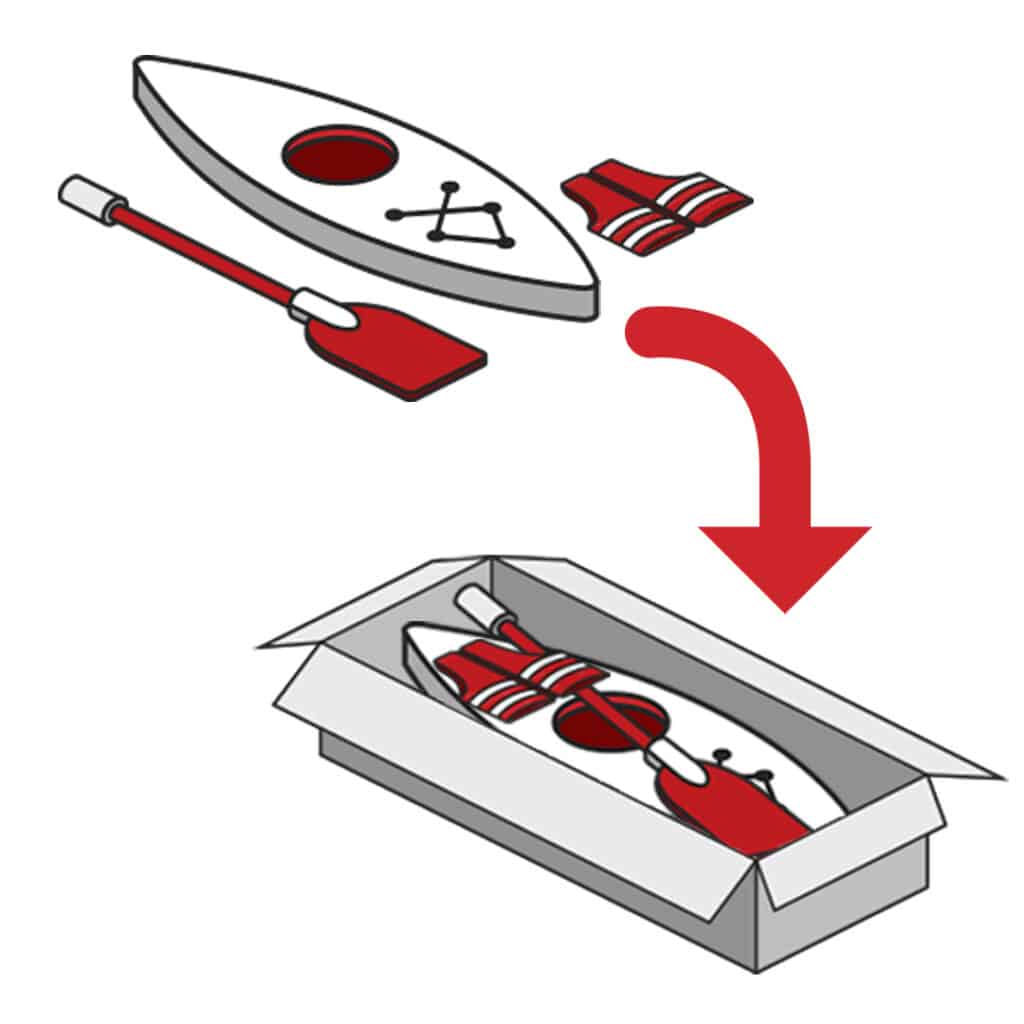ECommerce companies need to understand shipping costs. If you offer free shipping, those costs are part of your overhead and need to be covered in your retail pricing. However, even if your customers pay for shipping on every order, clarity on shipping charges is essential. High shipping costs can chase away buyers, so you must find ways to reduce this eCommerce fulfillment expense. To do that, you’ll need to understand billable weight.

Billable weight, defined
Billable weight is, simply, the weight you are charged for when you ship a package. That weight will be the actual weight, rounded up to the nearest pound in many cases. For example, if you want to send a 15.4-ounce package via USPS, you’ll pay postage for 16 ounces (1 pound).
Billable weight isn’t just affected by rounding up ounces, however. For some packages, shippers base the billable weight on the dimensions of the box rather than the actual weight. That is called dimensional weight pricing, and if you ship large items, you need to understand how it works.
When you ship a package with FedEx, UPS, or USPS, you’ll be charged either the actual weight or the dimensional weight, whichever is larger.
Methods to calculate actual weight
If you’re shipping a single box, you can determine the actual weight by placing it on a scale. But home scales are sometimes inaccurate, so you might want to weigh your package again when you ship it to double-check. If you mail a 16.1-ounce package and only put 16 ounces worth of stamps on top, USPS will send it back to you for insufficient postage.
At Red Stag Fulfillment, we ship thousands of boxes every week, so we use software to help calculate the actual weight of each order. When we onboard a new client, we add the weight and dimensions of each of the client’s products into our system. When we ship an order, our warehouse management system can calculate the actual weight by using the data on the products in the box. Pre-calculating shipping weight allows us to communicate with carriers so they know what to expect.
The difference between actual weight and dimensional weight
Actual weight is based on the number when you place a package on a scale, and dimensional or DIM weight is based on the measurements of the box. The major U.S. carriers all use a formula, including a number called the DIM factor, to determine dimensional weight.
FedEx, UPS, and USPS adopted dimensional weight policies to include the space needed to transport a box, as well as the weight, in the shipping cost. As energy costs have gone up, having these more precise calculations has become important for carriers to charge appropriately for their services.

For example, a box filled with iron weights might be small but heavy. Charging for the actual weight of that package would reflect the energy required to transport it. By contrast, imagine shipping an assembled fishing rod. Not only is the rod very long, but you might want to pack it in a large box to pad the delicate instrument during shipping. That fishing rod is very light, but its box takes up a lot of space. A shipment of individually boxed shipping rods that fills a container needs a different pricing model than dense, heavy iron weights, so carriers use DIM weight.
To determine the weight that you’ll be charged for, start by placing your package on a scale to determine the actual weight. Then use the formula below to calculate the dimensional weight. Your shipping charge will be based on the cost to ship, whichever weight is greater.
How to determine the dimensional weight of a package
Let’s take the example of shipping a lightweight bicycle helmet. The helmet ships in a 10” x 10” x 10” box. The package, including the helmet, infill, and packaging, weighs 15 ounces. That means the actual weight is 1 pound because all shipping weights round up to the nearest whole number.

To figure out the DIM weight, you need to know the DIM factor for each shipper. UPS and FedEx both use a DIM factor of 139. Then you multiply the cubic size of the package by multiplying length x width x height. So, the formula to calculate DIM weight for the helmet with either of these carriers is:
(10x10x10)/139 = 7.19
Like actual weight, dimensional weight rounds up to the nearest whole number, so the DIM weight of this bike helmet is 8 pounds for FedEx and UPS.
USPS uses a DIM factor of 166, so the formula would look like this:
(10x10x10)/166 = 6.02
That seems to indicate a DIM weight of 7 pounds for USPS, but there’s a catch: If the volume of your package is less than 1 cubic foot, USPS will only use the actual weight. So, USPS would charge you for the 1-pound actual weight in the case of the bicycle helmet, while FedEx and UPS would use the 8-pound DIM weight.
The easiest way to figure out DIM weight is to use Red Stag Fulfillment’s handy dimensional weight calculator.

3 strategies to reduce dimensional weight charges on oversized products
If your eCommerce company sells products subject to dimensional weight pricing, you may still be able to reduce your billable weight. Here are three strategies that the professionals at Red Stag Fulfillment often use to help our order fulfillment clients.

Revamp packaging
The first and easiest way to reduce DIM weight charges is to ship in smaller boxes. If you include a lot of extra padding or even empty space in your packages, you could be paying to ship air.
Another space-saving strategy is to skip the overbox. An overbox is a box on top of the packaging from the manufacturer. Some orders must be shipped inside another box, but some products can be sent in the manufacturer’s packaging. Work with your factory and your 3PL services provider to see if you can safely ship orders without an overbox.
Of course, some items need extra space because they are fragile or awkwardly shaped. You still have options for your billable weight.

Use package consolidation
When dimensional weight pricing applies, package consolidation may allow you to ship accessories in the box at no extra charge. For example, when you ship a bicycle, you must place it in a large box. But when customers order bikes, they often order accessories at the same time. If you can package bike shorts, a cap, or even a helmet into the box with the bike, you save the cost of shipping these items in a separate package. If your added items don’t increase the actual weight to more than the dimensional weight, package consolidation can let you ship the accessories for free.

Consider palletized freight
At Red Stag Fulfillment, we ship a lot of oversized products. In some cases, it’s simply not cost-effective to pay DIM weight and oversized surcharges. Palletized freight may be a good alternative for those products.
As eCommerce has expanded to allow consumers to buy more oversized items online, such as furniture, freight companies have begun to offer more home delivery options. You can ship a couch, a bed frame, or even a fully-assembled bike on a pallet and have it delivered to a residential address.
There are a couple of caveats with palletized shipping for home delivery. Freight may take longer than a traditional carrier, so it’s essential to set expectations on delivery times in advance. And freight companies need advance notice of residential deliveries to send a truck that can negotiate smaller streets and deliver where there is no loading dock.

Red Stag Fulfillment helps eCommerce companies reduce shipping costs
We think about dimensional weight a lot at Red Stag Fulfillment. That’s because many of our clients sell oversized or bulky products, and we’re the industry experts in shipping large or fragile items while keeping billable weights as low as possible. While other 3PLs might turn away merchandise that is complex to ship, we like the challenge. And we’ve proven[link to case study – wallbeds] again and again that we can deliver for our clients like no one else.
If you’re struggling with your billable weight, we can help. We will look for creative solutions to high DIM weight charges and provide fulfillment guarantees, so you don’t have to worry about shipping errors.
More about billable weight:
- The Advent of Oversized ECommerce
- What Is a Dimensional Weight Scale?
- Is Package Consolidation Right for You?







